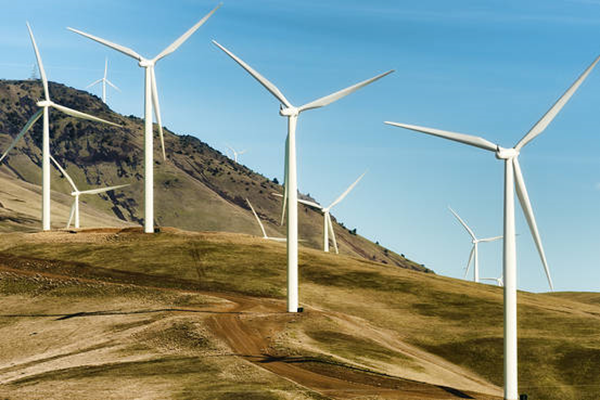Impact Investors Hold US$228 Billion in Assets
By Abby
Schultz ● June 6, 2018 10:13 a.m. ET
|

Windturbines in the high desert landscape of rolling hills in
the Columbia River Gorge
Illustration: Getty Images |
The relatively young market for impact
investments—those that seek to have a positive effect on the
environment and society—is continuing to expand at a steady pace as
more players enter the market, the Global Impact Investing Network
reported in its latest snapshot of the market released late Tuesday.
The
229 investors that responded to the GIIN’s eighth Annual Impact
Investor Survey held about US$228 billion in assets as of the end of
2017, a figure the U.S.-based nonprofit describes as a conservative
measure of a market largely focused on private investments. For 2016’s
survey, the GIIN surveyed 209 organizations with US$114 billion in
assets.
While not
comprehensive, the annual survey “represents the largest exercise of its type in
the market,”says Abhilash Mudaliar, the GIIN’s director of research.
A better
barometer of the sector’s growth comes from a subset of 82 respondents who have
participated in the survey since 2013. These investors experienced a compound
annualized growth rate in assets under management of 13% a year. In their impact
investments, these investors collectively held US$50.8 billion in assets in 2017
from US$30.8 billion in 2013.
“Once we
account for new entrants to the market it would show the industry is growing at
a rate even faster than that,” Mudaliar says.
One clear sign
of the market’s youth, and the fact that it is likely to grow, is more than 50%
of all the respondents made their first impact investment within the last 10
years. While most of the respondents are fund managers, managing nearly US$72
billion in impact assets, they are largely investing on behalf of wealthy
individuals and family offices as well as foundations, the GIIN survey found.
Family offices making direct investments for impact represented 4% of
respondents.
About a
quarter of investors who responded invest mostly via private equity (26%) and
private debt (24%) vehicles. The top impact sectors are financial services
(19%), energy (14%), microfinance (9%) and housing (8%), the survey found.
Most investors
the GIIN surveyed are happy with the way their impact investments are
performing, with 82% saying their investments have met their expectations for
impact and 76% saying their investments have met their expectations for
financial performance, the survey says.
But the survey
also looks at potential pitfalls. As the “mainstreaming of impact investing
starts to pick up,” there’s a risk, says Mudaliar, that the integrity of the
market could start to decline. To get at these risks, the surveys asks investors
for their thoughts on the strategies for addressing “impact washing,” or the
offering of investments that claim to have positive social and environmental
impacts but may not actually be making a difference.
The best way
to combat dilution in the impact investing market—and “mission drift” among
investors—is to request “greater transparency from impact investors on their
impact strategy and results,” 80% of survey respondents said, while 41% said
“third-party certification of what qualifies as an impact investment” would
help.
“This is one
of the areas where the GIIN is committed to investing more resources and beyond
that, looking into more strategies to uphold integrity of impact investing,” by,
for example, developing a set of principles for impact investments, Mudaliar
says.
The survey
also found that 84% of respondents who invest in both conventional and impact
investments are making more impact investments compared to three years ago and
84% also said their organization “has a greater commitment to measuring and
managing the impact of impact” of these investments. Only 6% said key decision
makers at their organizations were more reluctant to make impact investments.
“These
findings are extremely encouraging and promising,” Mudaliar says.
Investors did
agree that various challenges remain in the way of the industry’s growth,
including a lack of investing options across the spectrum of risk and returns.
One reason is most impact investment options today are in the private markets,
which limits the number of investors who can invest for impact. But there’s also
appetite for “very early stage high-risk investment capital in start-ups, social
enterprises, and frontier markets,” he says.
More impact
investors are managing and measuring the actual social and environmental effects
of their investments, but the approaches in the market are fragmentary. Of
investors surveyed, 69% use proprietary metrics, 66% use qualitative information
and 59% use metrics aligned with IRIS, a methodology for measuring social and
environmental impact managed by the GIIN.
“How to address
fragmentation and bring about a greater degree of standardization in the ways in
which we measure and manage impact—that’s a priority for us going forward,”
Mudaliar says.
|
Copyright ©2018 Dow Jones & Company, Inc. All Rights Reserved. |